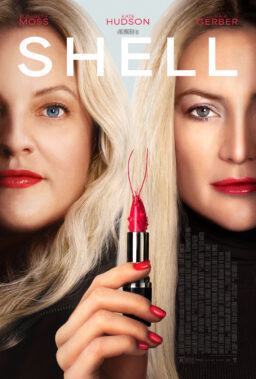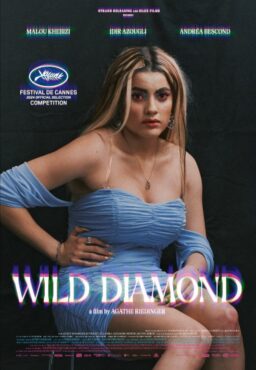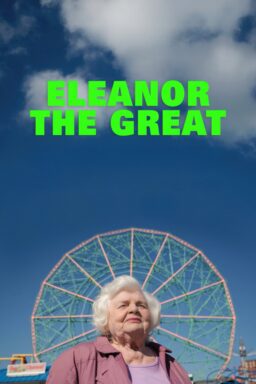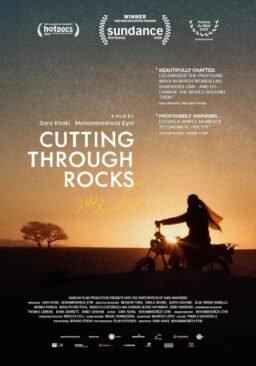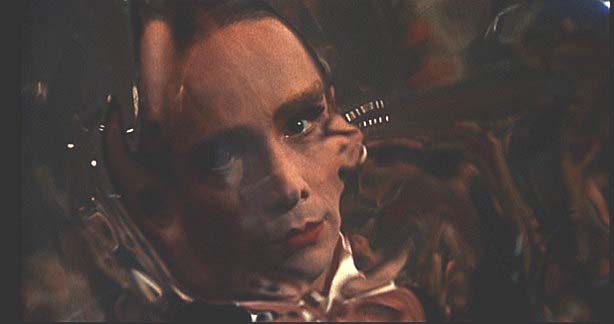
“I am your host! Und sagen…”
Here they are, eleven of the most famous opening shots in movie history, plus a bonus that I threw in just because I like it. Prepare to smack your head and say, “D’oh! I knew that!” But don’t give up — keep sending in your nominations for great opening shots, along with your explanations for why they set up the movie so well, to: jim AT scannersblog dot com.
Congrats to Daniel Dietzel, who got all ten right, but did not hazard a guess about the two bonus shots — and to Jeremy Matthews, who got nine out of the top 10, but also correctly identified both the bonus/tiebreakers!
And come back Sunday for the answers to the original Opening Shots Pop Quiz.
Now, the answers to the Opening Shots Quiz 2: 10 Easy Pieces (+2):

1) “Do the Right Thing“ (Spike Lee, 1989)
“Wake up wake up wake up!” The final words of Lee’s previous film, shouted by Laurence Fishburne at the end of “School Daze,” become the opening call of DJ Mr. Señor Love Daddy (Samuel L. Jackson) in “Do the Right Thing.” As Love Daddy continues with his rap about playing “the platters that matter, the matters de platter,” he also offers a steamy weather prediction: “Hot!” The camera moves from this close-up of clock, mic and lips, pulls back, out the window and then looks down the block where all the movie’s action will take place. And Ernest Dickerson’s photography makes it look oppressively, inflammably hot indeed.

2. “La Dolce Vita“ (Federico Fellini, 1960)
The incongruous image of a statue of Jesus, with arms outstretched, being flown over the ruins of ancient Rome, on its way to the Vatican. It’s the first example of spectacle — of an event staged for public viewing and publicity — in a film that’s all about creating imaginative stages and giving performances. Aboard the second helicopter is the playboy celebrity journalist Marcello (Marcello Mastrioanni), both covering the event and part of it, who will stop to float above, and flirt with, some rooftop sunbathing beauties along the way.

3. “Psycho” (Alfred Hitchcock, 1960)
I think it was Robin Wood (in “Hitchcock’s Films”) who wrote that the first few shots of “Psycho” — looking out over Phoenix, AZ, on a particular date at a precise time, as the titles tell us, before closing in on a hotel room window — convey both a sense of randomness and inevitability. That the camera should choose this particular couple in this particular room seems almost arbitrary. Who knows what’s going on behind all those other doors and windows out there? But the fact that we have, in fact, landed in Marion Crane’s (Janet Leigh) “private trap” (even before she’s fully sprung it on herself) indicates we’re going to follow her, inexorably, to her unforseen destiny.

4. “The Searchers“ (John Ford, 1956)
The woman opens the door, and the camera moves through it with her and her family to greet Ethan Edwards (John Wayne). At the end of the film, she will be dead, what’s left of the family will be re-united thanks to Ethan, but he will remain beyond the threshold of that doorway, only to “turn his back on home” and “ride away” as it closes behind him.

5. “Blade Runner“ (Ridley Scott, 1982)
Not only is it a magnificent special effects shot, this futuristic vision of Los Angeles as a high-tech post-industrial wasteland, but it sets up a feeling (along with Vangelis’s synthesizers) of oppressive, nighmarish dread (with a dash of awe) that doesn’t let up until the final bright, blue-green images of escape back into nature.

6. “Blue Velvet“ (David Lynch, 1986)
The credits play over a waving sheet of crushed blue velvet, which gives way to an equally blue sky. The camera tilts down to the white picket fence and red roses (accomplishing more in one image than in all of the hackneyed “American Beauty,” which strove for a similar effect). This is just the first shot in Lynch’s picture-postcard small-town montage (set to Bobby Vinton’s recording of the title song), which ends with some sort of heart attack or seizure on a manicured suburban lawn and descends beneath the turf to discover a world of swarming, devouring insects beneath. But it is the essential set-up, without which the whole sequence would be off-balance. Red, white and blue — quintessentially American images of roses, a picket fence, and an endless blue sky.

7. “8 1/2“ (Federico Fellini, 1963)
A claustrophobic nightmare of traffic and congestion (later parodied, memoably, by Woody Allen in “Stardust Memories“). We are sealed in the airless car with Guido (Marcello Mastroianni). And, all around, others are entombed in their separate compartments. The vehicles are simultaneously bell jars (or killing jars) and department store windows, with their mannequins on display, while glassed off from one another.



8. “Cabaret“ (Bob Fosse, 1972)
As the credits appear, we detect slight movements on the screen, which is at first dark and monochromatic. The indistinct sound of a crowd of voices seeps into our consciousness as the slow-moving images bleed into color. A drumroll. A crescendo, cymbal crash, und — “Wilkommen!” The Emcee (Joel Grey) pops into the frame, looking right at us, and begins to sing. We have been peering into a distorted mirror, reflecting… ourselves, sitting in the audience. The moments when the Emcee fixes us with his gaze in the mirror, then redirects it into the camra lens as the camera pulls back, and finally shifts his attention to the audience in the cabaret are electrifying. This opening image will be reprised at the end, when we move across the reflected/distorted interior of the cabaret again, this time with Nazi swastikas distinctly visible in the crowd. (This one seemed to be the hardest to guess on this quiz — though a few eventually identified it. I was afraid it was so distinctive it would be too obvious, so I chose a frame just as the Emcee’s head is popping up.)

9. “Rosemary’s Baby” (Roman Polanski, 1968)
La la la la-la la-la… The camera takes in a sweeping view and swings to look downward at one of the most famous (and sinister) residences in America: The Dakota Apartments. Far below, a young couple, Rosemary (Mia Farrow) and Guy (John Cassavettes) are taken into its maw. Sure enough, the final image reverses this movement up and away from the building. But inside, well… there’s something wrong with Rosemary’s baby…

10. “Touch of Evil“ (Orson Welles, 1958)
Only the most famous and celebrated opening shot in movies — with the possible exception of the aforementioned “Star Wars.” Do I need to describe it again? This hand starts the time-bomb ticking…

BONUS #1. “Rules of the Game” (Jean Renoir, 1939)
Renoir’s masterpiece has consistently appeared near the top of polls of the best movies of all time for decades. Why? Well, everyone has his reasons. But there’s no better place to start than this electrifying opening, which begins with this radio operator and then follows an unreeling spool of cable to a reporter with a microphone working her way through the crowd as the famed aviator Andre Jurieu touches down, completing his 23-hour solo Atlantic flight… only to proclaim into the microphone (two or three shots later) his bitter disappointment that the woman for whom he accomplished this feat “didn’t even bother” to greet him at the airfield. Released on the eve of war in Europe, Renoir’s is another film about public politics and private emotions.

BONUS #2. “Naked Lunch“ (David Cronenberg, 1991)
It’s simple: A red apartment door. A shadow of a man’s head, wearing a distinctive hat, appears on it. An arm reaches up and knocks. The low, Midwestern-flat, vinegary voice announces: “Exterminator.” (Could be the Grim Reaper himself knocking.) Cronenberg’s underrated film (which phantasmagorically interpolates elements from several William S. Burroughs novels with events from the author’s life) is about an exterminator who kills his wife, and must kill off his old identity and accept his homosexuality as part of his new identity, in order to be reborn as an artist. When I hinted that I love it beyond all reason, I was telling the truth — but also referring to the film’s tag line: “Exterminate all rational thought.”





